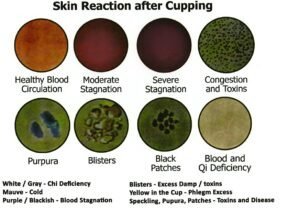Phone Number
+1416-778-1390
Our Location
2155 Lawrence Ave East Toronto M1R 5G9
Our Location
1217 Barnswallow Court Mississauga L5V 2J6
+1416-778-1390
2155 Lawrence Ave East Toronto M1R 5G9
1217 Barnswallow Court Mississauga L5V 2J6
Chaudhry Clinic
July 16, 2025

Hijama, commonly known as cupping therapy, involves creating suction on the skin, aimed at promoting blood circulation and alleviating various ailments. However, after undergoing this treatment, many individuals experience notable skin reactions. Understanding these reactions can help patients prepare and manage them effectively.
When suction is applied during hijama, it can lead to a temporary discoloration of the skin. This occurs because the procedure stimulates circulation in areas where blood flow has been sluggish or compromised. Consequently, the level of stagnation determines the hues of marks left on the skin, ranging from bright red to dark purple. Typically, these marks may last for three days to a week, depending on the individual’s health condition.
Many clients report that the suction pulls toxins and waste products from deep within body tissues to the skin’s surface. While the resulting marks might seem alarming, they do not usually cause pain. In fact, clients often experience immediate relief after treatment. It’s common to observe lighter marks in subsequent sessions, indicating the effective removal of stagnation and toxins. Engaging in sweat-inducing activities post-treatment can further aid in detoxification and enhance results.
In rare cases, patients may develop blisters filled with fluid under the skin. While they can appear uncomfortable, they resolve quickly with appropriate care.
Being informed about these processes enhances the overall experience of hijama, allowing individuals to appreciate the health benefits while managing skin reactions effectively.
Wet Cupping mark type and colour Explained
For over 50 years, we’ve been committed to safe, holistic wellness that restores balance and supports lifelong health.

Copyright © 2025. All rights reserved.
